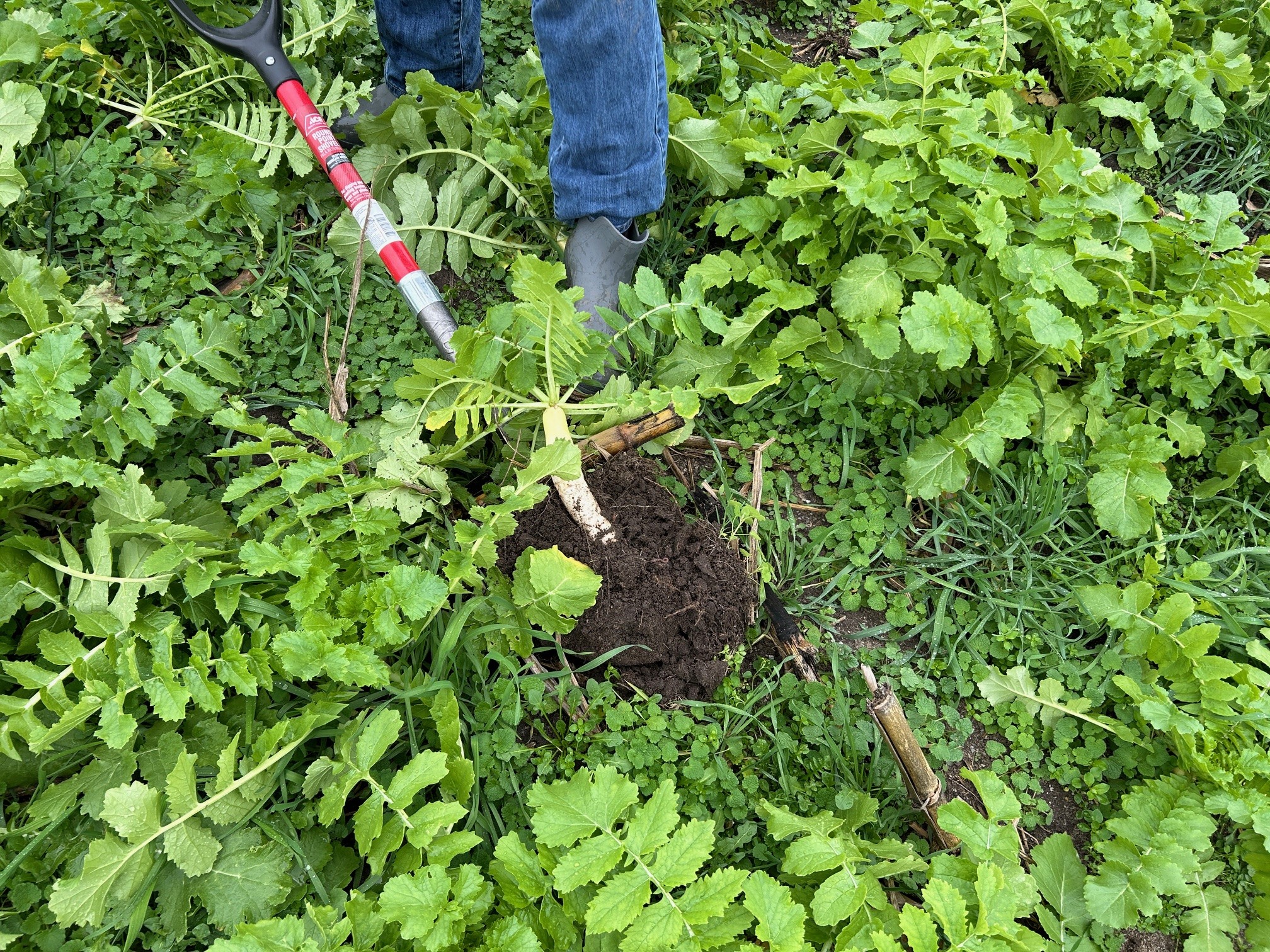
Daikon-type radish is a late-summer seeded, cool-season annual brassica known for its deep taproots. It’s typically seeded to help break up compacted soils.
Pure radish stands have value, but when mixed with grasses and/or small grains, they unlock their full potential of reducing erosion, suppressing weeds, and increasing soil structure and microbial function.
Seeding Rate (lbs. / acre)
- Drill: 2-5
- Broadcast: 3-6
- In a mix: 1-2
– Planting depth: 1/4”–1/3”
– Approximate seeds/lb: 35,000
– Days to germination: 4–6
Radish Benefits & Info
- Widely adapted
- Bred for deep and penetrating taproots
- Ideal for breaking up hardpans
- Great nutrient scavenger; repositions those nutrients in the soil profile
- Earthworm magnet
- Easy to seed through various planting methods
- Mixes well with small grains, either for cover crops or forage
- Generally winterkills, once temperatures reach the teens
- Normally needs about 6-8 weeks (before freezing temps) to reach potential
I want to comment on the resiliency of cover crops, shown here by radishes. When we started planting cover crops in the late summer it was dry, dry, dry. I had hundreds of acres of seed that sat for three weeks and didn’t have enough moisture to germinate. I was starting to get nervous because I like to use several winter kill options, including the radish pictured below; the first picture is from mid October. Fast forward to November 6 and I couldn’t be happier with how my radishes are looking. Look at the side-by-side pictures below to see how quickly they have grown in a matter of weeks, and they are still growing!
The above pics are from November 25 – same field
The point I’m trying to make with these pictures is just how resilient these plants can be. We are going to get a lot of benefits by having these acres covered. Now that we are getting some rain, it’s reassuring knowing the moisture is getting into the ground and will be there for my corn next spring.
Sarah Houin, Agronomist



